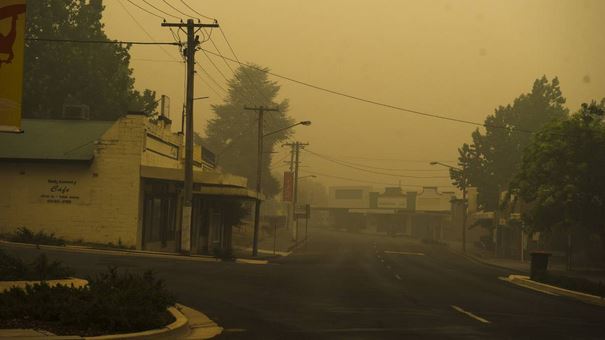15 January 2020
We could ignore the graphs showing a persistent rise in CO2 levels. We could aircondition our way through record-smashing heat waves. We could turn our backs on inland areas gripped by years of drought. But this summer we cannot escape the stinging taste of smoke, and the knowledge that it came from an unfathomable 26 million acres of fire, many billions of animals, and over 2000 homes.

The banality of global warming is over. No longer are the consequences of our actions far away in time or space. The nightmarish future we were long warned about has arrived and is staring us in the face along firefronts thousands of kilometres long and 70 metres high.
The experiences of this summer – which is far from over – are scary. The tragic loss of dozens of lives is deeply saddening. The long-term health effects on millions of Australians are confronting.
But rather than despair, Australia should follow a bipartisan group of American leaders and declare the start of World War Zero.
The proposed warlike commitment to driving carbon emissions to net zero is demanded by the scale and existential threat of global warming.
As in war, it is mission-critical for politicians to put aside their squabbles to unite to align the powers of all citizens and sectors to work towards a clear collective goal: in this case, keeping the world inhabitable.
The international immensity of the challenge may seem beyond our grasp, but we should draw courage from Australia’s proud record of contributing to global challenges: lest we forget the sacrifices of two world wars.
The good news is that we are well-armed to take up the fight.
Our plans and actions may not be perfect – they never are for wicked problems – but as in times of war, this is no excuse to defer.
One of our secret weapons is the ability of farmers to sequester carbon into their soils. This will not only reduce the concentration of carbon dioxide in the atmosphere, but will increase the land’s water-holding capacity, productivity, and drought resilience. Australian farms alone have the potential to sequester tens of gigatonnes of carbon dioxide, which they can be paid for through Australian and international carbon markets, where prices are on the rise. Governments should support farmers to capture this opportunity by providing financing for the infrastructure and learning-curve costs involved in shifting their management practices. This can be integrated into drought-recovery packages.
In the energy sector, the objectives must be to build more solar and wind farms, and new transmission lines for them to connect to. We also need to complement these with energy storage systems like batteries and pumped hydro. Closer to home, the distribution system could be strengthened with microgrid technologies that are able to keep local energy networks powered when they’re cut off from the national system, such as during natural disasters.
The decarbonisation of transport can be accelerated by rolling out a great national network of rapid electric vehicle charging stations along highways and in towns. Governments also need to remove perverse financial incentives while ensuring sustainable funding for road maintenance. Industry and governments must work together to create a road map for electrifying freight that provides futures for workers whose jobs will be automated.
These targeted actions must be complemented by an economy-wide price on carbon, which is the internationally agreed strategy that will unite Australia with our allies.
All of these tools are affordable, scalable, and available immediately. Not only have they been proven to be effective, but they will create new, largely rural, jobs and stimulate economic growth that is fit for purpose in a world economy committed to net zero emissions by 2050.
Our plans and actions may not be perfect – they never are for wicked problems – but as in times of war, this is no excuse to defer. We must act as if what we do now makes a difference, because it does.
Written Dr Bjorn Sturmberg, Research Lead, Battery Storage and Grid Integration Program at the Research School of Electrical, Energy and Materials Engineering, ANU College of Engineering and Computer Science.
This article originally appeared in the Canberra Times.
